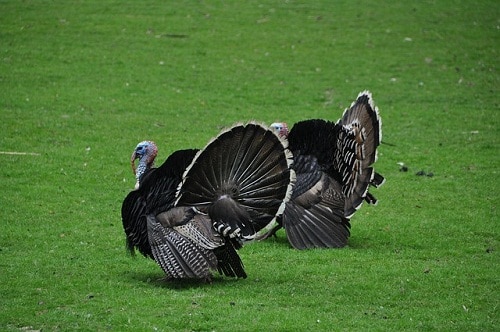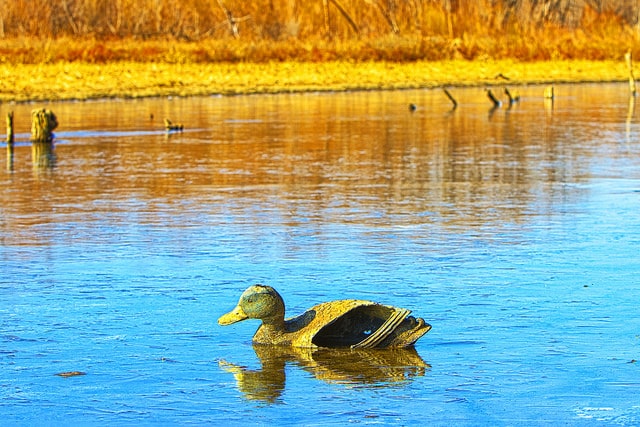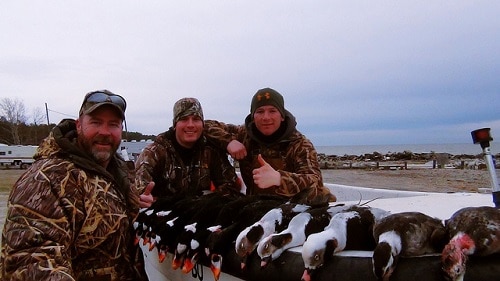If you’re looking to get into hunting as a beginner, turkey hunting can be a great introduction to this exciting and passion-filled lifestyle. My first hunting kill was a turkey during the Autumn season in South Dakota, along with my father and uncle. I was hooked after that. I’ve returned almost every year and taken part in many Spring season hunts as well.
Turkey hunting scouting tips are plentiful on the web and we’ll incorporate top tips and my experience here to give you a well-rounded knowledge base for the upcoming season. Make sure you check weapon requirements and bag limits for the state where you hunt and bring your camo gear. Here we go!
The Top 5 Turkey Scouting Tips for Hunters
Without further ado, here are my top five turkey scouting tips for all of you hunters out there.
#1: Identify the best location
Different states and provinces have different regulations, so do research in advance and then get out there to scout the area.
- The location is the most important of my turkey hunting scouting tips. Ideal turkey habitats are diverse and contain different sources of food, plenty of water, and shelter. Turkeys roost in trees and often drink from streams in more open areas. Much of their food is found in open areas.
- Note whether you’ll be on public or private land and be sure you have necessary permits and permissions. (Here’s a great video about location)
- Try planting a food plot heavy with bugs and wood to attract turkeys. I prefer to do this because it gives me the best chance at having nearby, well-hidden ambush areas. If you have the means to do this set it up while turkeys are roosting and be sure not to leave a man-made trace, (for reference, see this article).
#2: Start scouting early!
Turkeys are notoriously feisty and paranoid and without the proper approach you’ll find yourself eating Hormel from the grocery store instead of experiencing that delicious wild game taste and the satisfaction of self-sufficiency. Do your planning and you’ll see the easier side of turkey hunting.
- There is no reason not to begin your turkey hunting scouting in late winter, like February or March. By finding where the flock is in your target location well in advance, you’ll have the best chance at knowing their habits and ultimately having a successful hunt. (Great article here)
- As turkeys are very mobile, the longer you are able to observe them during scouting gives you best chance to learn their movements and be prepared for the hunt. Note their roosting and drinking areas on your map and how long they tend to spend there per day.
- Set up trail cameras across the area and check on them every 2-4 days (checking more often is just extra time out that gives turkeys more chances to see you and avoid the area). Find where they are feeding, and when the season starts to follow the turkey hunting scouting tips in step 3.
#3: Plan to make a day out of scouting before the hunt.
Prep equals perfection. That’s my hunting motto, and the most successful hunts I’ve done are the ones I prepped for the most. Follow a routine and always take notes of what you’re doing!
- Break your day up into sections, each with a primary focus to help you achieve the overall goal of bagging a turkey. The night before, make sure you have everything in order and ready to go. Binoculars, topo map, GPS, notes/outlines/research of the target area, weapon, outdoor supplies and clothes. Get on the road by dawn and cruise around the hunting area listening for turkey sounds and keeping an eye out for any hints of turkey presence. (Good discussion here)
- Later in the morning, patrol the hunt area. Watch for strutting toms in the fields, wooded areas, ridgetops, and crevasses. Blow the occasional owl call to perk their ears. Remember, when in open fields keep quiet always pay stark attention.
- By afternoon you should have a general idea of where the turkeys are. Look for roost trees, droppings, food, and other signs to mark their trail and start pinpointing your ambush spots based on where they will be later in the evening. Your turkey hunting scouting process is now in full swing.
- In the evening, follow their track from feeding back to roost spots. Before heading home, make sure you know exactly where they will be when you return the next morning for the hunt. I like to take notes on the map and mark ‘X’ in two to three different places I plan to hide out.
#4: Turkey talk!
Calling the birds reduces the chances that they will run away or remain hidden. Watch some videos of calls and practice while in your vehicle.
- To call in the turkeys, you’ll want to frequently use the mating noises of young hens. Hopefully, you’ve been practicing all winter! In the fields, stop frequently to make the call and then listen carefully for ruffles, noises, or movement. Turkeys respond to calls and can be surprisingly social. Toms come in easier than the quiet gobblers. (Here is a sample turkey talk)
- Having a decoy or stage noise maker makes your calls seem more authentic. Try and switch back and forth between your calls and using a decoy, this sounds more convincing!
- More info on talk and fall prep here.
#5: Have your weapon ready to go during scouting.
This makes scouting as realistic as possible and gives you a chance to test visibility in your ambush areas. Just be sure to prep your weapon:
- To avoid detection of your barrel, it should be camouflaged or at least dulled. Do this before turkey scouting and practice some approaches from your ambush spots. As part of your scouting prep be sure that the gun will shoot a clean shot to the head or neck from 20-40 yards, body shots won’t drop the bird cleanly.
- For bow hunting, you’ll want to get within 20 yards. Practice your approach during the scouting and use a blind to conceal movement. (For actual hunting guide, see here)
#6: Practice calling
If you’re looking to get a lot of turkeys, you should really be good at calling. This will take practice, it doesn’t come naturally. It’s never to early to start practicing either, and it’s good to start months before the season begins.
#7: Do a ground check
If you find a location and don’t see or hear any turkeys, don’t worry. Search the ground for other clues before leaving, such as droppings or track marks. Feathers may also be around to signify roosts. Do this during midday hours so that you don’t scare off any birds while they get close to roosting areas.
Making the Most Out of Turkey Hunting Season
I hope these turkey hunting scouting tips help you to better prepare for your next hunt! I’ve found turkey hunting to be the most addictive way to hunt because of the unique challenges those feisty birds bring to the table. I’d love to hear your thoughts and stories of turkey hunting- please share in the comments below! When taking new hunters out in the field, have them read up on procedures and take notes of what you are doing. If you found this article useful, share on social media because being prepared and educated about hunting is the best way to keep our passion sustainable for everyone.













